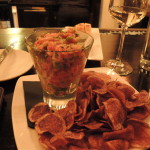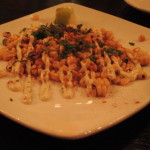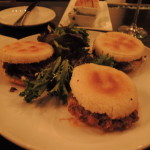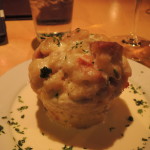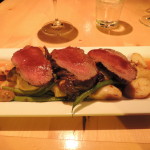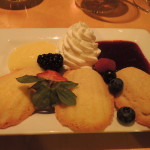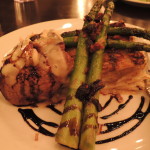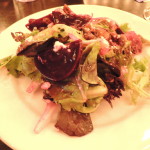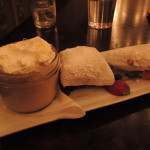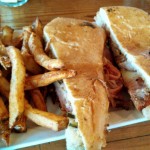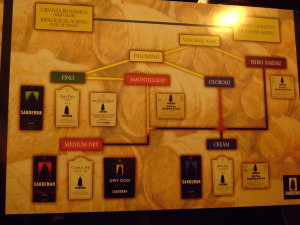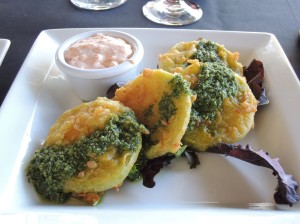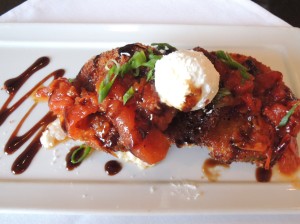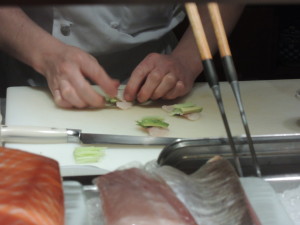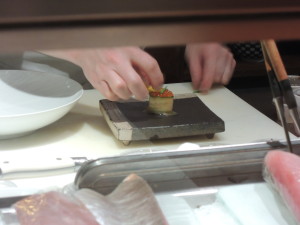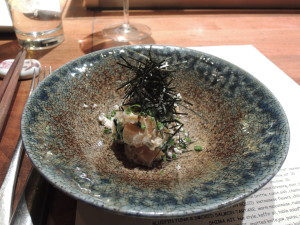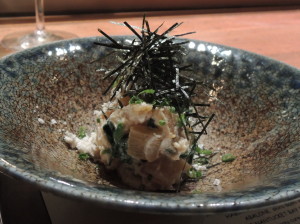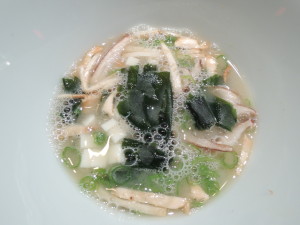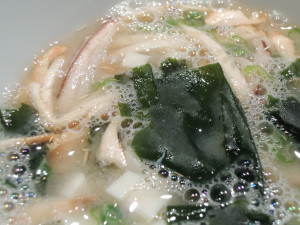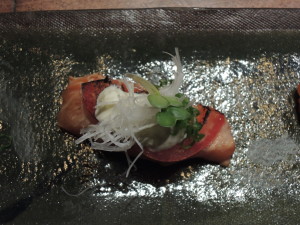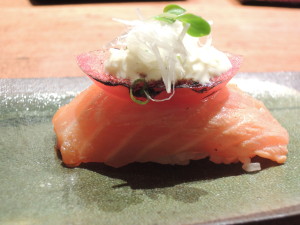Amazing Latin food in a lively atmosphere, this is a great restaurant. I dined alone and sat at the bar which allowed me to chat with the super friendly bartenders and other restaurant patrons. The food was fantastic, especially the featured tuna ceviche and the elote.
Be advised, the ceviche is huge.
Their elote (grilled corn with lime aioli and contija cheese) is a necessity.
Continuing the trend, the arepas were good, but enormous.
Although Contigo offers a (slight) discount for three arepas, you really only need one if you’ve had an appetizer. The pollo arepa would be my first choice, featuring a great meat to condiment ratio, and the right amount of spice. A great place to get Latin food that is not the typical “Tex-Mex” variety.
Price: $$$
A great restaurant, it looks a little tacky on the outside thanks to their neon sign. Do not be dissuaded. The food is delicious and well-prepared. Their menu changes fairly frequently and I opted for the specials on the night I dined: savory lobster bread pudding, venison steak, and lemon madeleines.
The lobster was a great choice, but very rich and heavy.
Luckily the venison was lean and served with simple yet delicious grilled vegetables.
The lemon madeleines with blueberry curd were fantastic. Light and fluffy yet crispy and chocked full of sweet and tart flavor, they were the perfect way to end the meal. This is a very solid restaurant serving a European fusion style fare that is a bit hard find elsewhere in the Tucson area.
Price: $$$
Great for brunch or dinner with fantastic views of Tucson and attentive service, this restaurant is a winner. Again, the menu changes frequently as it’s based off seasonal availability – a good indicator of fresh locally sourced food.
While dining there, the Seared Filet of Beef is not optional. This decadent dish includes a six ounce filet topped with melted brie and served with an amazing lemon potato gratin and balsamic drizzle. The flavor combinations are stellar.
My beet salad was an excellent start to the meal and the beignets were a delightful end.
The real star of the show was the beef filet. This restaurant is located on the Westin La Paloma property. While fantastic for hotel guests, it is a bit of hike for anyone based in downtown Tucson; though this does provide a great excuse to get out to the foothills and soak up the desert ambiance.
Price: $$$
Although they don’t serve dinner, Prep & Pastry is a good choice for all your other meals. I stopped in for lunch and fell in love with the space.
The interior is filled with light and decked out in a modern-rustic design scheme. Luckily, the food lives up to the local hype. My Cuban sandwich was fantastic – as any sandwich with duck confit should be.
Salty, juicy, and savory with a little tartness from the mustard and pickles, this sandwich has my number. Combined with a good glass of iced tea – I was in heaven. Most locals that work or live in the northeast area of Tucson (Catalina foothills) rave about Prep & Pastry. Stop in and see why.
Price: $
Pricing key based off one course for lunch and three courses plus two alcoholic drinks for dinner all including tax and 20% tip:
$ – under 20 $$ – 50 and under $$$ – 75 and under $$$$ – 100 and under $$$$$ – Over 100 – Break out the high limit credit cards – this is a special occasion restaurant



